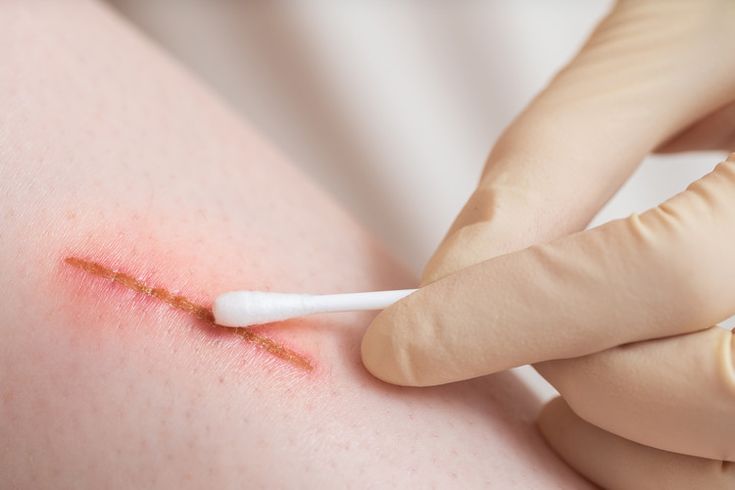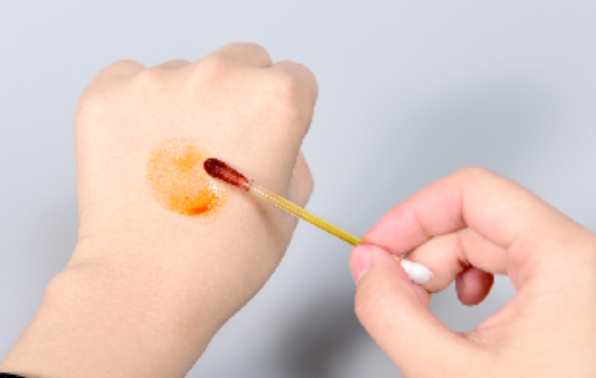In daily life, abrasions are common minor accidents for children and even adults. When faced with abrasions, many people's first reaction is to pick up alcohol and apply it directly, thinking that this can quickly disinfect. However, this practice may not be correct and may even cause unnecessary pain and potential risks. Today, let's talk about the correct disinfection steps after abrasions and focus on the application of disposable iodine cotton swabs in wound care.

Why is it not recommended to apply alcohol directly after a scratch?
Alcohol is a commonly used disinfectant, but it is highly irritating to wounds. After an abrasion, the epidermis has been damaged. Applying alcohol directly at this time will not only cause severe pain but may also damage the new tissue on the surface of the wound and delay wound healing. Especially for children, their skin is more delicate and has a lower tolerance to pain, so alcohol disinfection should be avoided.
Correct disinfection steps :
1. After an abrasion, first rinse the wound gently with running water or saline to remove dirt and foreign matter on the surface. This step is crucial because a clean wound can effectively prevent infection.
2. After cleaning the wound, a mild and effective disinfectant should be used for disinfection. At this time, a disposable iodine swab is an ideal choice. Iodine swab is a broad-spectrum antibacterial disinfectant that can effectively kill bacteria, viruses, and fungi, and is less irritating to the wound. The disposable iodine swab is conveniently designed and can squeeze out the right amount of iodine without touching the bottle's mouth, which is both hygienic and convenient.
3. When using a disposable iodine cotton swab, hold the tail of the cotton swab and gently apply the cotton head to the wound and surrounding skin. Be careful to apply it evenly to ensure that every corner is disinfected. For deeper wounds, you can press the cotton head into the wound with a little force for disinfection, but avoid wiping repeatedly to avoid aggravating the wound damage.
3. After applying iodine, you should wait for a while for the disinfectant to dry completely. Generally speaking, you need to wait for about 30 seconds to 1 minute. During the drying process, you should avoid touching the wound with your hands or other objects to avoid secondary contamination.

wound dressing?
After disinfection, if the wound is large or deep, you should consider using a suitable wound dressing. A hydrocolloid dressing is a good choice. It can provide a moist healing environment for the wound, promote wound healing, and reduce scar formation. When using it, make sure that the dressing fits the wound tightly to prevent air and bacteria from entering. Regularly changing the dressing is also an important measure to keep the wound clean and prevent infection.
Some practical suggestions for life :
1. Keep disposable iodine cotton swabs at home: For families, disposable iodine cotton swabs are essential for wound care. They are easy to carry and store, and very convenient to use. It is recommended that parents keep some in their family medicine cabinets in case of emergency.
2. Proper treatment of minor abrasions: For minor abrasions, such as minor damage to the skin epidermis, no bleeding, or a small amount of bleeding, you can follow the above steps to treat it yourself. However, if the wound is deep, bleeding does not stop, or is accompanied by other serious symptoms (such as infection, fever, etc.), you should seek medical treatment in time.
3. Educate children to pay attention to safety: The best way to prevent abrasions is to avoid accidents. Parents should educate children to pay attention to safety and avoid playing in dangerous places or doing dangerous activities. At the same time, they should also provide children with a safe living environment to reduce the occurrence of accidents such as abrasions.
Correct disinfection steps after abrasion are essential to prevent infection and promote wound healing. Choosing disposable iodine cotton swabs as disinfectants and combining them with appropriate wound dressings for bandaging is an effective method of home wound care. I hope this article can provide you with practical wound care knowledge and make your life healthier and safer. For more information on Innomed®Silicone Foam Dressing, refer to the Previous Articles. If you have customized needs, you are welcome to contact us; You Wholeheartedly. At longterm medical, we transform this data by Innovating and Developing Products that Make Life easier for those who need loving care.
Editor: kiki Jia

 English
English عربى
عربى Español
Español русский
русский 中文简体
中文简体








